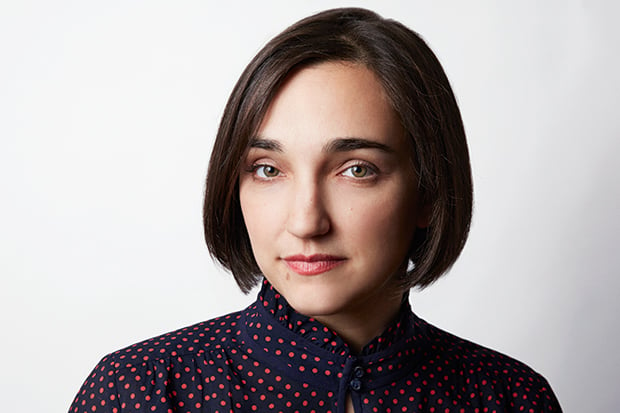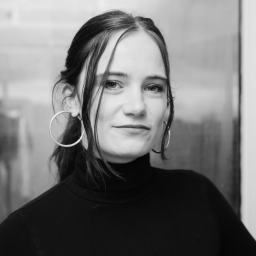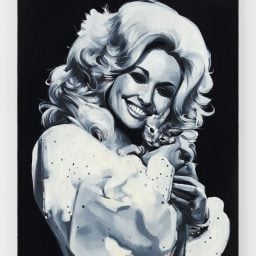Fourteen years ago, Rachel Uffner opened her gallery at the worst possible time.
It was September 2008, the same month that Lehman Brothers collapsed. After five years as a director at the now-shuttered D’Amelio Terras Gallery, Uffner had decided to strike out on her own with a space on the Lower East Side. Her rent on Orchard Street was $3,000 a month—a pretty good deal at the time.
There was just one problem, she recalled recently. “Nobody was buying art.”
The situation—and Uffner’s pragmatic response to it—made her particularly well prepared when another catastrophe hit the city last spring, temporarily bringing business to a standstill. Against the backdrop of the pandemic, she followed the playbook she had developed during 2008: reduce overhead, take out loans, don’t panic, and move slowly.
“You end up finding the silver lining when you’re forced into situations,” she told Artnet News in the gallery’s back office while her 14-year-old dachshund, Fatty, sat at her feet. “We’re all kind of a resourceful sort anyway.”
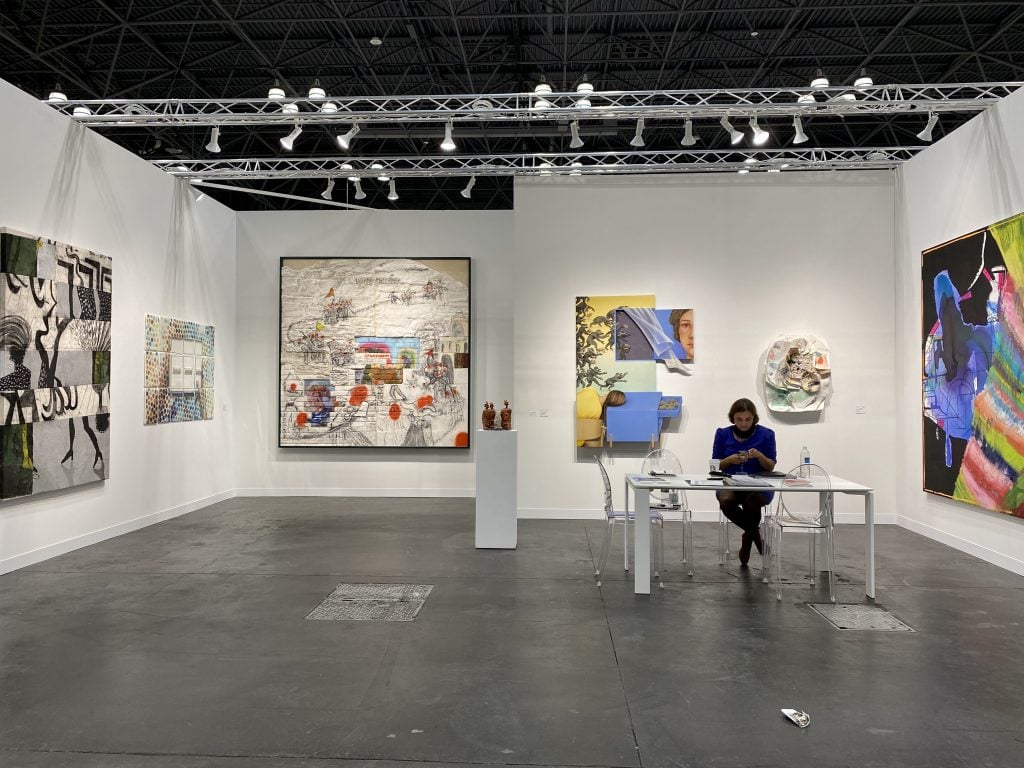
Rachel Uffner Gallery, New York, at the 2021 Armory Show at the Javits Center in New York. Photo by Sarah Cascone.
As it turns out, it’s not the once-in-a-generation crises that have stretched Uffner most, but rather the daily grind of being a midsize gallery (a term she has only recently come to embrace) in an increasingly stratified market. While she has managed to keep business afloat in recent years, the challenge has been exacerbated by the loss of several of her most prominent artists.
Uffner called these departures the “elephant in the room” during our hour-long discussion. Her arc as a dealer has been characterized by scouting talent early, before the broader market recognizes their promise, and supporting them consistently.
“I have to adjust how I feel about my working relationships because I do put so much of myself into them,” she said. “I just have to change what’s realistic. But it’s such a relief once it happens, and then you just move on.”
***
Uffner got her start as an intern in the contemporary department at Christie’s, eventually moving on to work with prints and multiples and then interiors. As a dealer, she gained a reputation as a keen talent-spotter who worked with mostly female artists (especially painters).
Over the years, she’s tended to the careers of closely watched figures such as Pam Lins, Sara Greenberger Rafferty (who split with the gallery last year and has not announced new representation), Shara Hughes (who also left last year, to join David Kordansky in Los Angeles), and Hilary Pecis (who is now co-represented by David Kordanksy, Rachel Uffner, Halsey McKay, and Timothy Taylor).
Pecis, who had her first show with Uffner in 2018, told Artnet News, “I didn’t realize that it was so heavily female, but that must have subconsciously been part of what I liked about it. There was a nice blend of more academically-driven work, some of it not so much.”
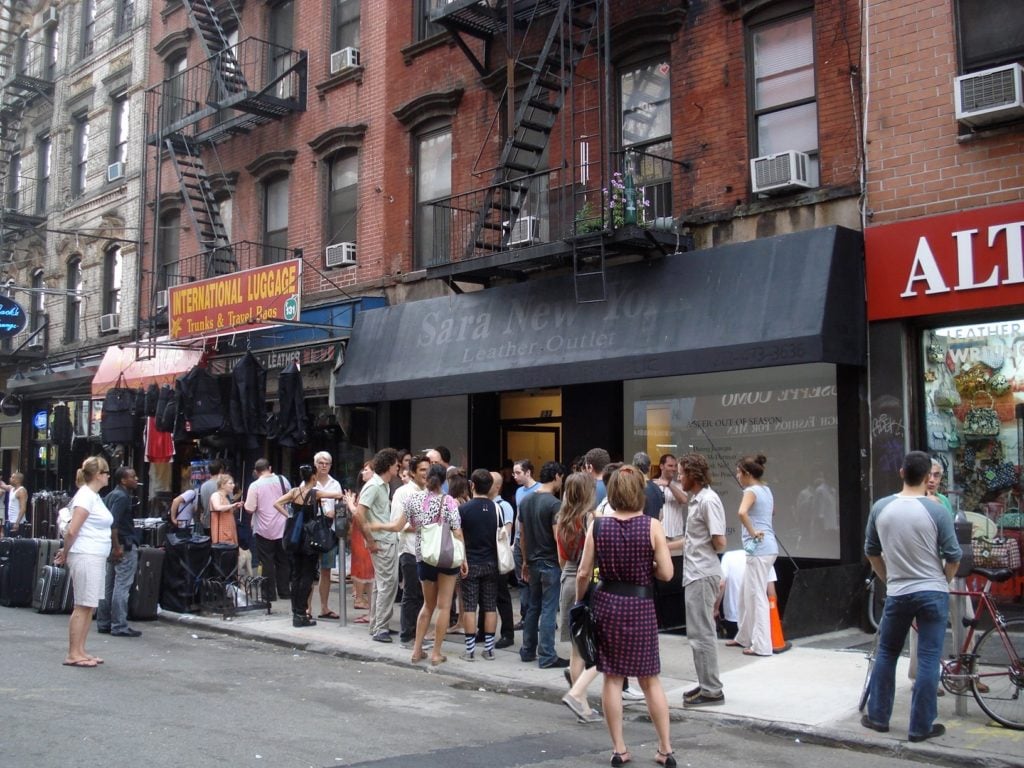
Outside of On Stellar Rays former space in the Lower East Side, courtesy of the gallery.
Uffner opened on Orchard Street at the same time as a cohort of young dealers including Candice Madey, Laurel Gitlen, and Lisa Cooley, all of whom wanted to turn the Lower East Side into a destination for new art. “Collectors love [Rachel],” said Heather Hubbs, founder of the New Art Dealers Alliance, which worked with many of these new voices. “She’s always had a really great eye.”
Almost as soon as Uffner opened, the recession hit—and she had to get scrappy. The fact that she had no employees at the time kept overhead down. She applied for two business loans (which she secured through Cisco and Asian Americans for Equality). She also kept prices low. “Some of my [current] colleagues are still shocked, I only sold works in the hundreds of dollars, not in the thousands, for my first year and a half,” she said.
After five years, and one or two added zeros to many of her prices, Uffner was able to move into her current space on Suffolk Street. It has since expanded to around 4,000 square feet, absorbing JTT gallery’s old space, an office area in the front, and the “upstairs gallery,” as its nicknamed.
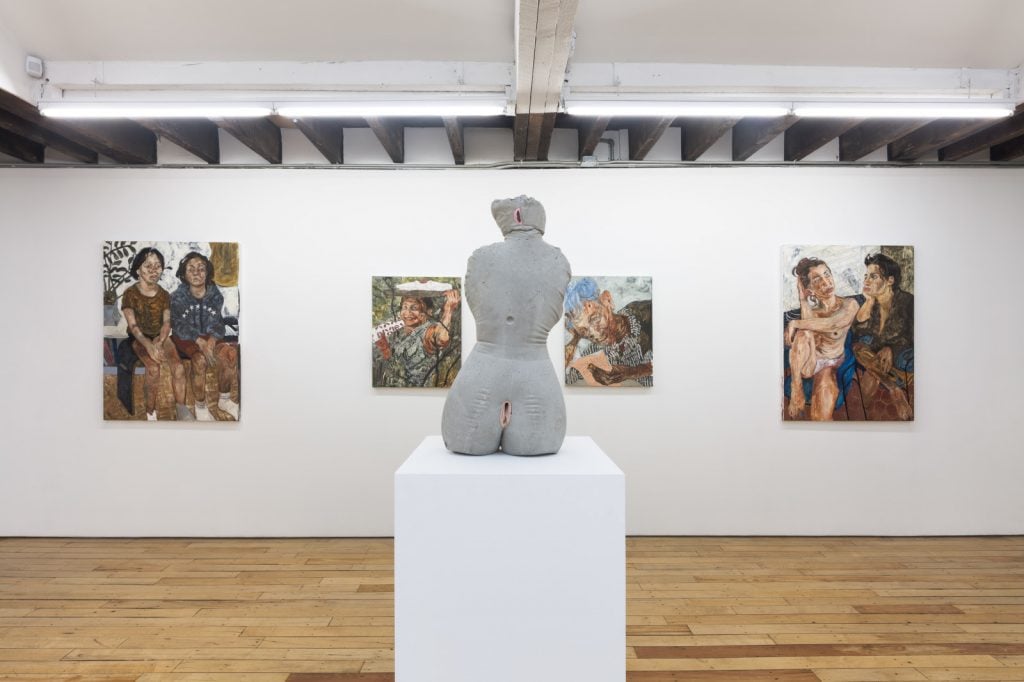
“Upstairs: Bernadette Despujols, the Vast Ocean in Which the Woman Swims” at Rachel Uffner, New York. Photo courtesy of Rachel Uffner, New York.
Still, that didn’t stem painful losses, including Greenberger Rafferty and, earlier, Sam Moyer, who decamped for Sean Kelly Gallery in 2016. The eye that made Uffner stand out had proven to be a double-edged sword.
“Clearly, she has a knack for choosing really good artists that it seems lots of galleries are interested in,” Hubbs said, before adding with an uncomfortable laugh, “and she’s proven consistently that she has a program that people are watching.”
In a statement, Greenberger Rafferty told Artnet News: “Rachel Uffner and I worked together for 13 years. I absolutely love each of the five shows we did at the gallery and am thankful for the community that brought to my work.”
Uffner said these sometimes painful experiences helped her define her personal art-dealing philosophy. “You could try to do those things that make it so comfy for artists to stay with [larger mid-size] galleries, like, ‘You wanna come here? First-class flight!'” she said. “I think a lot of it is, what kind of business you want to have, what connection you have to the art, and how close you have to be to your shows. Because that’s something that’s obviously sacrificed when you have a big gallery.”
***
Since the pandemic, Uffner has once again had to readjust her business plan. Unlike many larger galleries, she did not lay anyone off. But last year was the first since 2008 that she didn’t have a booth in Miami during Art Basel Miami Beach. It was due in part to a mistake, as she didn’t apply anywhere amid rumors that the fairs might not happen at all. But in the end, it turned out to be a bit of a blessing.
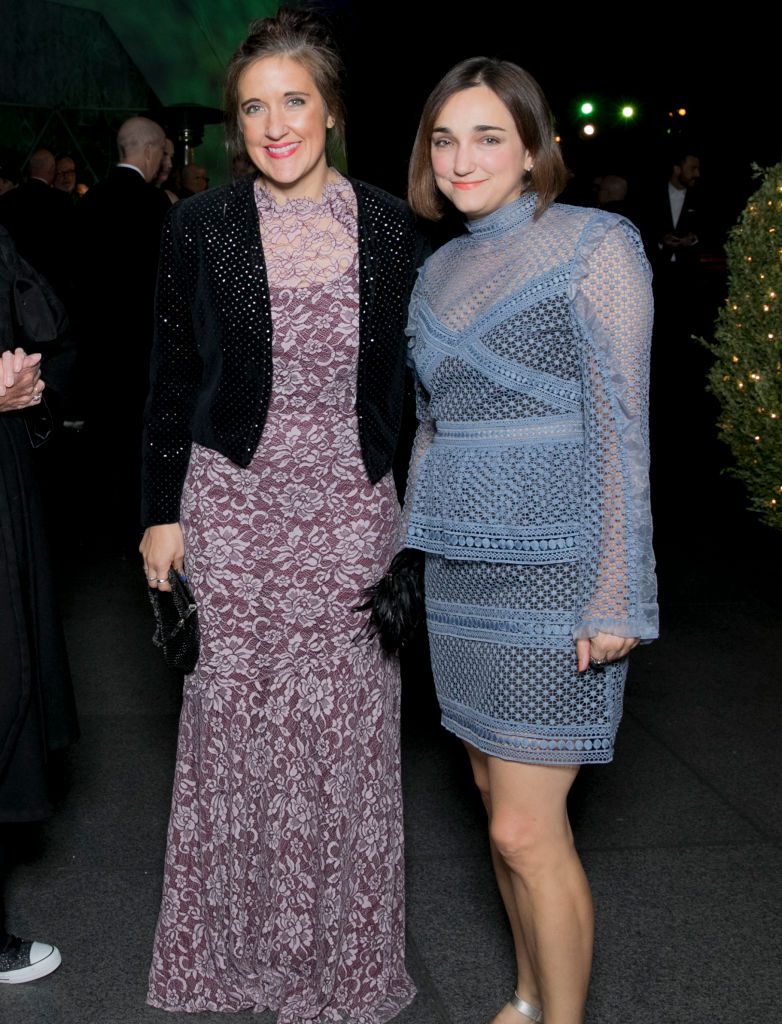
Shara Hughes (L) and Rachel Uffner at TWO X TWO for AIDS and Art 2017 at the Rachofsky House on October 28, 2017 in Dallas, Texas. (Photo by Kevin Tachman/amfAR2017/Getty Images for amfAR)
“I feel like a lot of people have had funny relationships with art fairs in general because you don’t want to depend on them,” she said. “It was kinda great to get some distance from it.” (The gallery isn’t totally out of the circuit though, as Uffner showed at the Armory Show, FIAC, and at Frieze London.)
Pecis described Uffner’s approach to lockdown as overall calm. “She hasn’t over-extended herself, and she’s grown a really slow and steady, safe space. Because of that, she was able to scale back as needed. But it wasn’t like, ‘Fire everybody! Shutter the doors!'”
“She’s very transparent,” Pecis added. “That’s something I like about her—you know what you get. Gallerists can sometimes promise a lot of things, but delivering is a whole other thing.”
As Uffner enters her fourteenth year on the Lower East Side, she’s getting more comfortable with her status as a mid-tier gallery. “It’s always been that we haven’t had any backers, but a mid-sized gallery is one that could probably enter the race to at least try to, or make the decision not to.” (She added, skeptically, “But Lehmann Maupin is considered a mid-sized gallery, right?”)
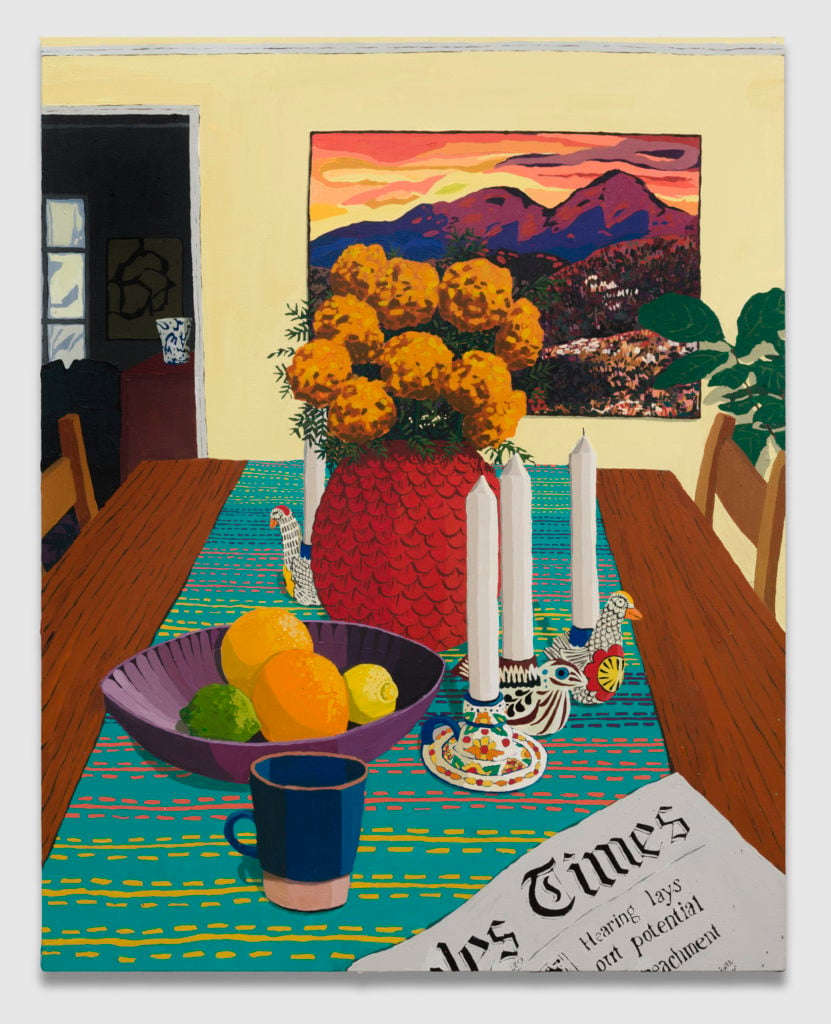
Hilary Pecis, Morning (2019). Courtesy the artist and Rachel Uffner Gallery.
Uffner knows from her experience in 2008 that having a strong cohort is important for the strength of each individual business. That’s why, when she witnessed the new generation of emerging galleries struggle during lockdown, she decided to get proactive. As a member of NADA’s board, she got involved with their Gallery Relief Fund, which awarded $5,000 grants to younger dealers struggling to make ends meet.
“There was this weird switch where, at a certain point, galleries were able to re-calibrate and figure out how to make things work,” she said. “But that took a while.”
She still has moments of self-doubt. “I go back and forth and ask myself, ‘Can I still ask for this much, or is it just a fantasy that’s gonna end in a second?'”
Yet Uffner has emerged from the past two years with an almost zen-like approach to business. “The pandemic brought changes around for everybody, including for myself and my gallery,” she said. “I wouldn’t be honest if I said that I didn’t go through dips. I go through dips every time. And it’s cliché but it’s true—you end up stronger.”
